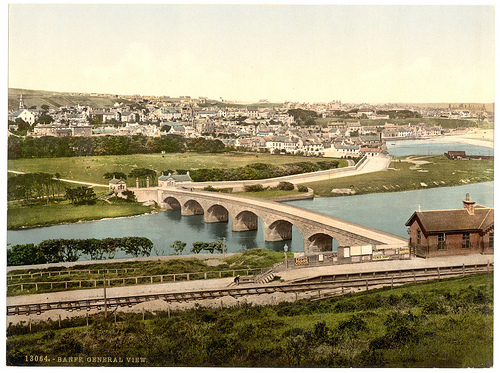Banff
The former county town of the traditional Scottish county of Banffshire, Banff is a town that is now a large part of Aberdeenshire and is a sea port and royal burgh. Standing on the west bank of the River Deveron where it meets the North Sea and facing McDuff, which is situated on the east side of the river, Banff is built on a series of terraces which are cut into the hillside above the harbour.

History
The history of Banff is one which is long and varied. Way back in the 12th century, the town was a part of the Northern Hanse, an alliance of leading mercantile towns which were modelled on the Hanseatic League. The remains of the original Banff Castle, which can be seen in the town, were once a stronghold, guarding the entrance to the harbour from raids by the Vikings, and serving as a residence for the royal family. Today, the new ‘castle’ which visitors can see is a Gothic conceit, constructed in 1750 by Lord Deskford.
Architecture
Lovers of historic architecture will be right at home in Banff, with numerous examples of 16th and 17th century architecture still standing. On southern Carmelite street, visitors can see houses which have been built on land which was once monastic, dating back to the 16th century when monks from Arbroath built a Carmelite priory in the town. Today, visitors can still see the very fine merkat (market) cross which dates back to when the priory was built.
18th Century Landmarks
Although there are a number of examples of surviving 16th and 17th architecture surviving, Banff’s biggest claim to fame came just before the Victorian era as a popular 18th century resort town. A large majority of the period architecture seen in Banff today dates back to this time, with perhaps one of the most striking being the octagonal Town Steeple which was built during 1764-66. The steeple was erected next to the residence of Admiral Gordon, with stories telling of how the Admiral strongly protected due to fears that the peculiar structure might fall onto his house.
Visitor Attractions
History lovers are most certainly catered for in Banff; the Banff Museum on High Street is home to numerous displays of local history, geology, and an exclusive display on Banff silver. Visitors to Low Street can see the Biggar Fountain, which stands on the spot where James McPherson famously played his fiddle in one last defiant act before he was executed for piracy. However, the most popular visitor attraction in the town of Banff is Duff House, a stunning mansion which was built for the Earl of Fife by William Adam. Today, the house is an art gallery, which features works from the collection of the National Gallery of Scotland. The mansion itself is surrounded by acres of parkland which is open all year round for visitors to enjoy. Another historical building in the area which is worth a visit is Craigston Castle, a 17th century tower house with preserved original interiors.
Banff offers a fantastic destination for days out and holidays alike.


